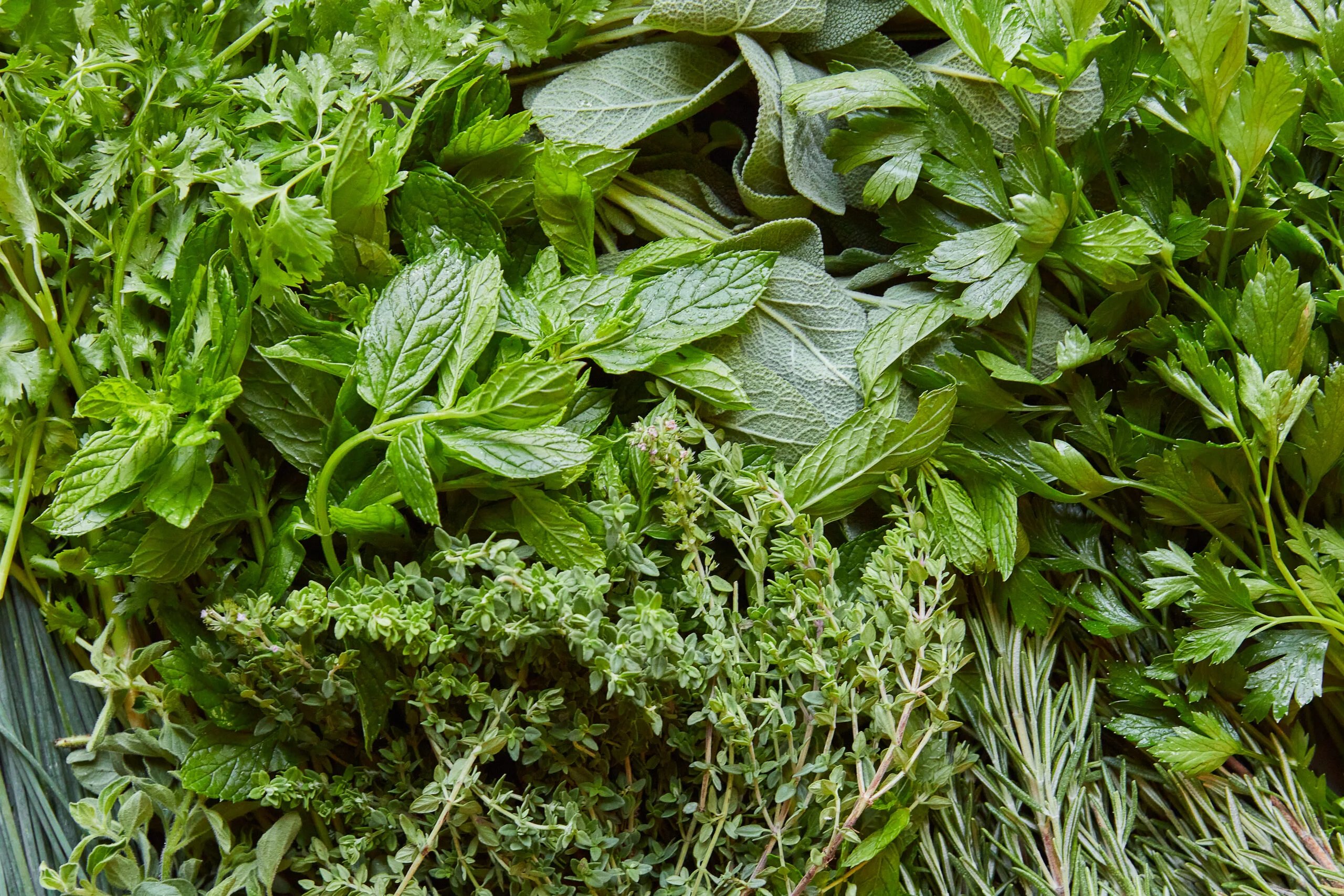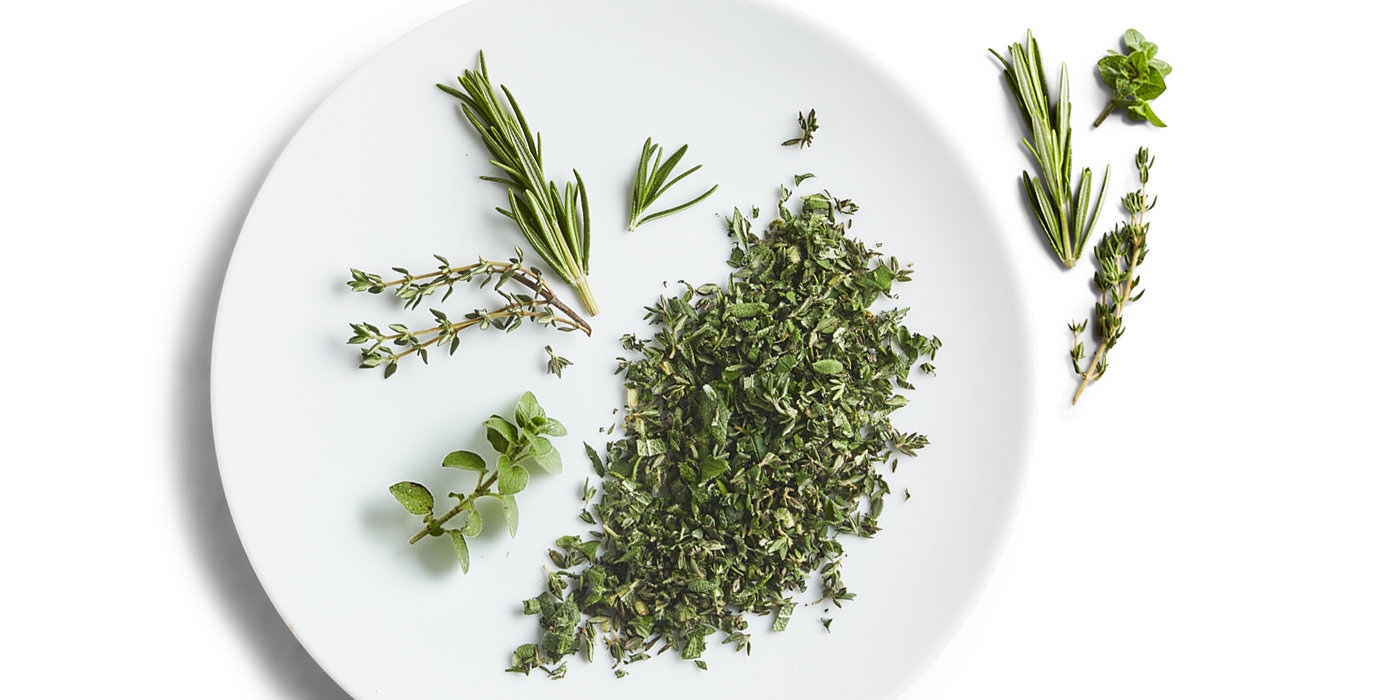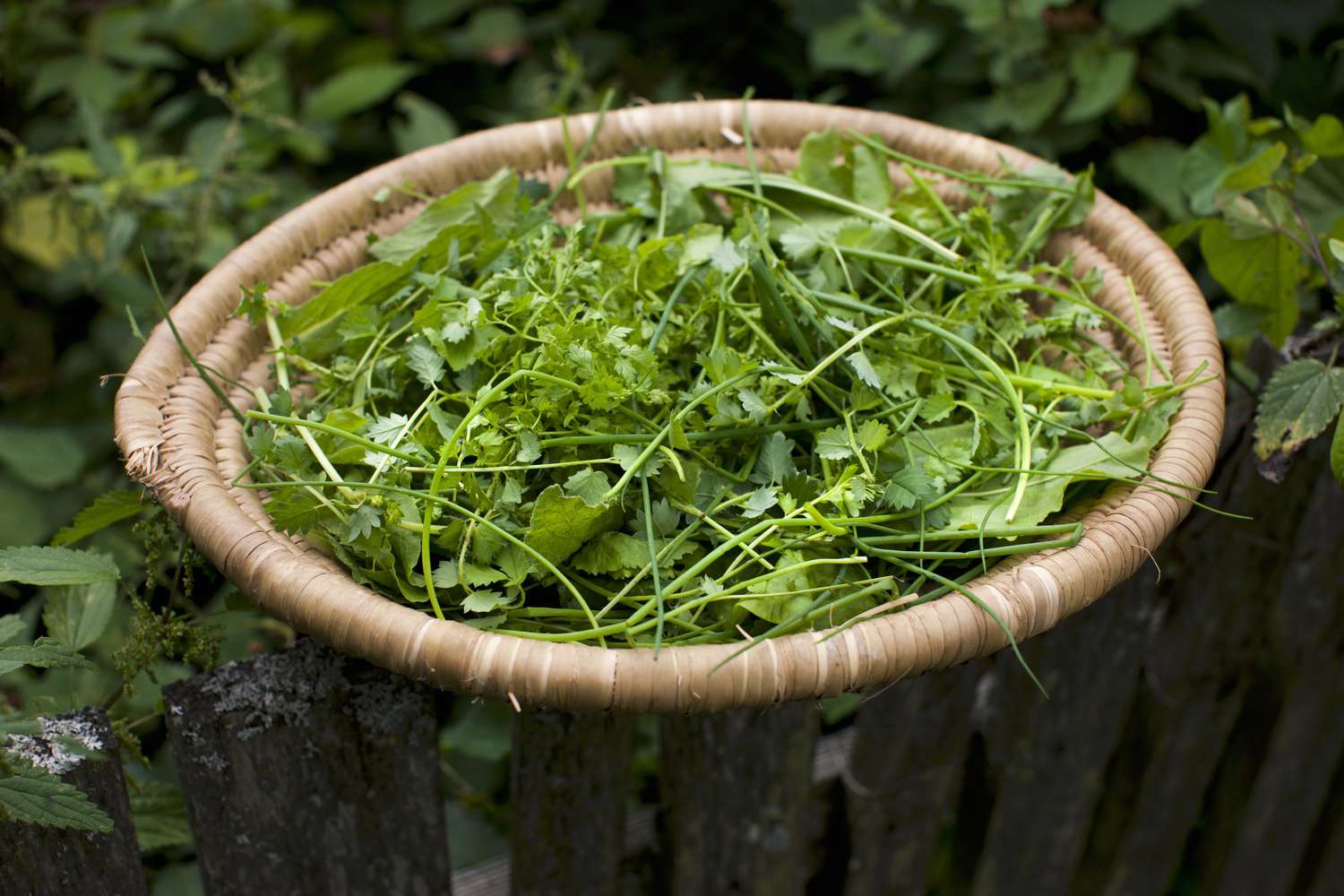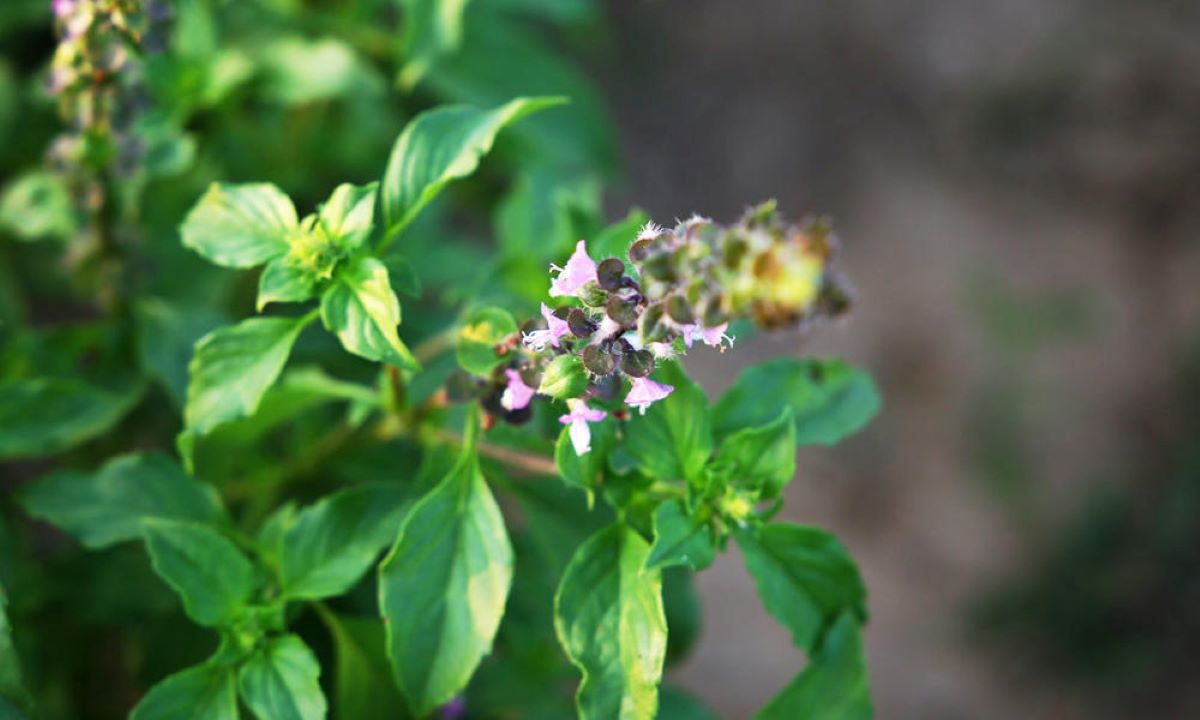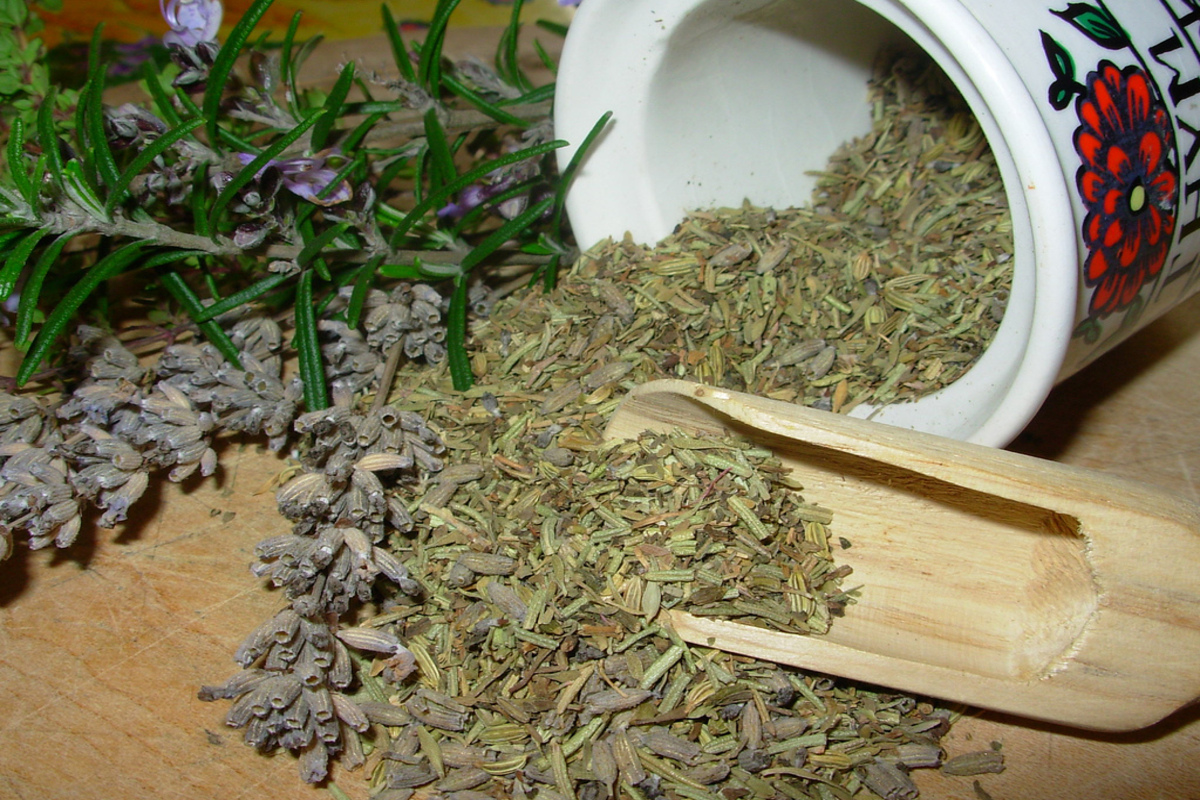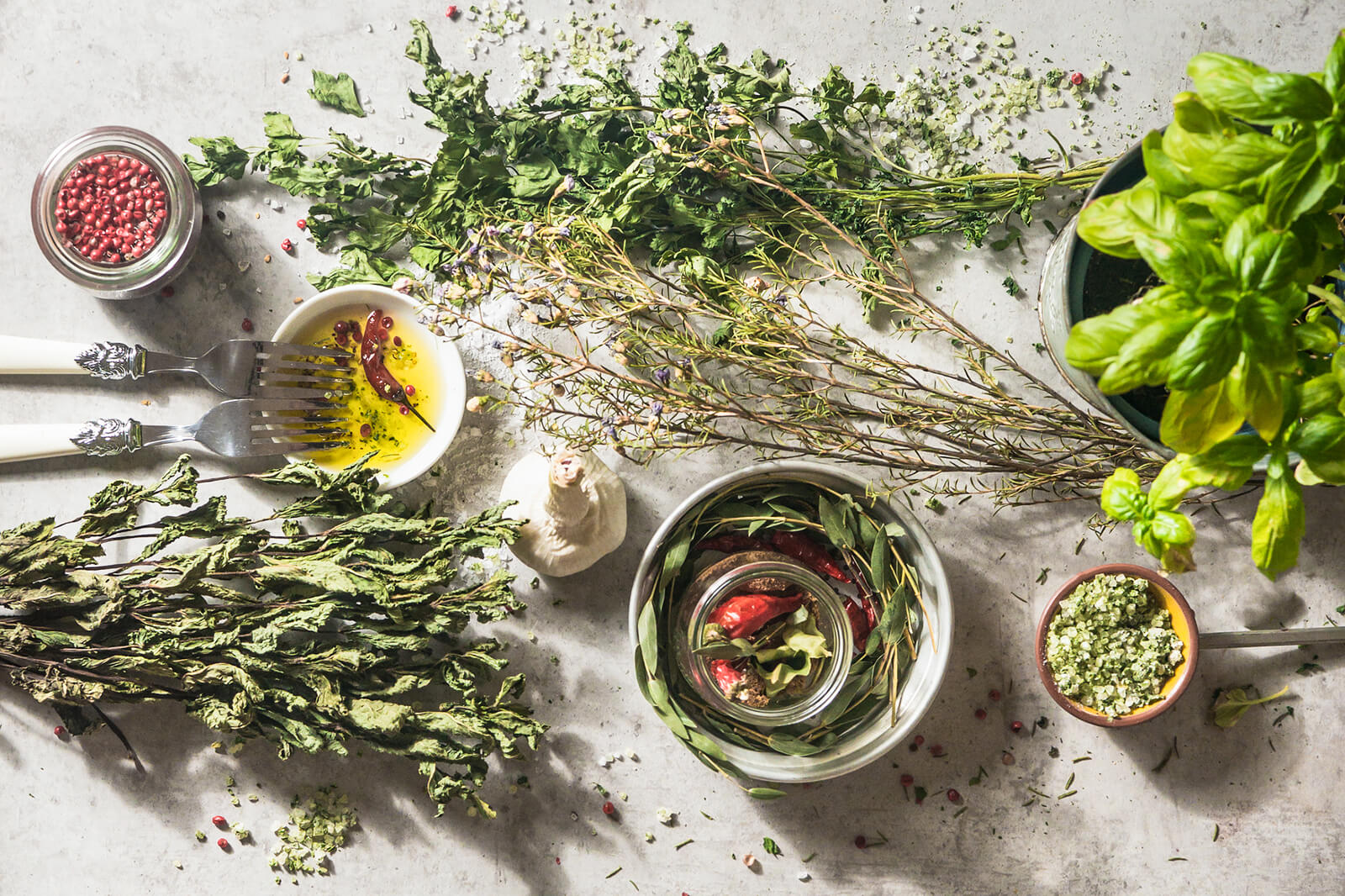Home>Gardening News and Trends>Gardening Trends>What Herbs Increase Estrogen
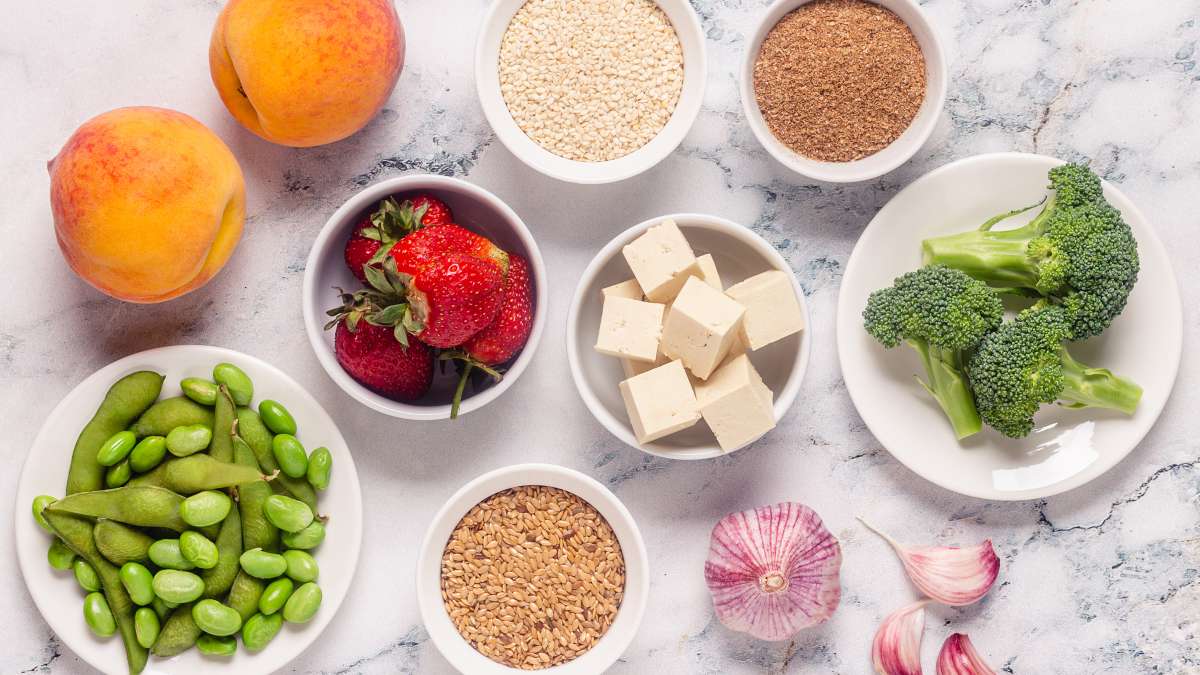

Gardening Trends
What Herbs Increase Estrogen
Modified: February 6, 2024
Discover the top gardening trends for boosting estrogen with these powerful herbs. Enhance your garden and improve hormone balance naturally.
(Many of the links in this article redirect to a specific reviewed product. Your purchase of these products through affiliate links helps to generate commission for Chicagolandgardening.com, at no extra cost. Learn more)
Table of Contents
Introduction
Gardening trends have always been influenced by various factors, including changing lifestyles, environmental concerns, and a desire for sustainable living. In recent years, there has been an increased interest in gardening as people seek to connect with nature and cultivate their own organic produce. As gardening enthusiasts become more knowledgeable about different aspects of gardening, they are also exploring innovative ways to create beautiful and functional outdoor spaces.
One trend that has gained considerable attention in the gardening community is the use of herbs to enhance the aesthetics and functionality of gardens. Herbs not only add beauty and fragrance to outdoor spaces but also offer a myriad of benefits, including culinary uses, medicinal properties, and attracting pollinators.
One particular aspect of herbal gardening that has been gaining traction is the cultivation of herbs that can naturally increase estrogen levels in the body. Estrogen is an essential hormone in the human body, playing a vital role in various physiological processes, including development, reproduction, and bone health.
Many women experience imbalances or fluctuations in estrogen levels throughout their lives, which can lead to various health issues and discomfort. While there are conventional medical treatments available, such as hormone replacement therapy, an increasing number of individuals are turning to natural alternatives for managing their hormonal health.
In this article, we will explore the fascinating world of herbs that can help increase estrogen levels naturally. We will delve into the benefits of these herbs, how to incorporate them into your gardening routine, and precautions to consider. Whether you are facing hormonal imbalances or simply want to harness the medicinal properties of these herbs, this article will provide valuable insights and suggestions to support your journey towards hormonal wellness.
Understanding Estrogen
Before delving into the topic of herbs that can increase estrogen levels, it is important to understand what estrogen is and its role in the body. Estrogen is a group of hormones that are primarily responsible for the development and regulation of female sexual characteristics and reproductive functions. However, it is important to note that estrogen is also present in males, albeit in smaller amounts.
Estrogen is produced primarily by the ovaries in females, with smaller amounts being produced by the adrenal glands and fat tissues. It plays a crucial role in regulating the menstrual cycle, promoting the growth and development of reproductive tissues, and maintaining bone density. Estrogen is also involved in various other processes, including the health of the cardiovascular system, brain function, and skin health.
Imbalances in estrogen levels can occur naturally during various stages of life, such as puberty, pregnancy, and menopause. However, certain factors can also contribute to hormonal imbalances, including stress, diet, environmental toxins, and certain medications.
Low estrogen levels can have a significant impact on a woman’s overall health and well-being. Some common symptoms of low estrogen include irregular menstrual cycles, hot flashes, fatigue, mood swings, vaginal dryness, and decreased libido. In addition, low estrogen levels can also increase the risk of developing osteoporosis, cardiovascular diseases, and cognitive decline.
Understanding the importance of maintaining balanced estrogen levels is essential for overall health and vitality. While medical treatments like hormone replacement therapy can be effective, many individuals are seeking natural alternatives to support their hormonal health. This is where herbs that can increase estrogen levels come into play.
By incorporating specific herbs into your gardening routine or daily life, you can potentially support your body’s natural estrogen production and promote hormonal balance. These herbs contain compounds that mimic the effects of estrogen in the body, helping to alleviate symptoms associated with low estrogen levels and potentially improving overall well-being.
Now that we have a basic understanding of estrogen and its role in the body, let’s explore some herbs that have been traditionally used to increase estrogen levels naturally.
Effects of Low Estrogen Levels
Low estrogen levels can have a significant impact on a woman’s physical and emotional well-being. When estrogen levels decrease, it can lead to various symptoms and health issues that can affect overall quality of life. Understanding these effects can help individuals recognize and address potential hormonal imbalances more effectively.
One of the most common symptoms of low estrogen levels is irregular menstrual cycles. Estrogen plays a crucial role in regulating the menstrual cycle, and a decrease in its levels can lead to irregular or absent periods. This can make it challenging to track fertility and can cause anxiety and frustration for women trying to conceive.
Low estrogen levels can also contribute to the development of hot flashes and night sweats. These sudden and intense sensations of heat can be accompanied by sweating and flushing of the skin. Hot flashes can disrupt sleep and cause discomfort, significantly impacting a woman’s quality of life.
In addition to physical symptoms, low estrogen levels can also affect mental and emotional well-being. Estrogen influences the production of neurotransmitters in the brain, including serotonin, which is responsible for regulating mood. A decrease in estrogen levels can contribute to fluctuations in mood, leading to increased irritability, anxiety, and depression.
Vaginal dryness is another common symptom experienced by women with low estrogen levels. Decreased estrogen levels can lead to changes in the vaginal tissues, resulting in dryness, itching, and discomfort during sexual intercourse. This can not only affect a woman’s sexual satisfaction but also impact her overall quality of life and intimate relationships.
Furthermore, low estrogen levels can have long-term effects on bone health. Estrogen plays a crucial role in maintaining bone density, and a decline in its levels can increase the risk of osteoporosis. This condition weakens the bones, making them more susceptible to fractures and breaks.
Other symptoms associated with low estrogen levels include decreased libido, fatigue, memory problems, and urinary tract infections. It is important to note that these symptoms can vary from person to person and the severity may also differ.
Recognizing and addressing low estrogen levels is crucial for overall health and well-being. By understanding the effects of low estrogen and exploring natural methods to increase estrogen levels, individuals can take proactive steps towards hormone balance and improved quality of life.
Natural Herbs That Increase Estrogen
When it comes to naturally increasing estrogen levels, certain herbs have been recognized for their potential effectiveness. These herbs contain compounds that can mimic the effects of estrogen in the body, helping to alleviate symptoms associated with low estrogen levels and promote hormonal balance. Here are some of the natural herbs that have been traditionally used for this purpose:
- Red Clover: Red clover is a perennial flowering herb that contains isoflavones, which are plant compounds that have estrogenic properties. It has long been used in traditional medicine to alleviate symptoms of menopause and promote hormonal balance. Red clover can be consumed as an herbal tea or taken in supplement form.
- Dong Quai: Dong Quai, also known as female ginseng, is a herb native to China and Japan. It has been used for centuries in traditional Chinese medicine to treat gynecological conditions and hormonal imbalances. Dong Quai is believed to contain compounds that help regulate estrogen levels and promote hormonal balance.
- Black Cohosh: Black Cohosh is a flowering plant native to North America. It has been traditionally used to treat symptoms of menopause, including hot flashes, mood swings, and vaginal dryness. Black Cohosh contains compounds that can bind to estrogen receptors in the body, exerting estrogenic effects.
- Wild Yam: Wild Yam is a root vegetable that has been used in traditional medicine for its potential estrogenic effects. It contains a compound called diosgenin, which is a precursor to estrogen. While wild yam itself does not contain estrogen, it is believed to support hormone balance by providing the building blocks necessary for estrogen production in the body.
- Maca: Maca is a root vegetable native to the Andes mountains of Peru. It has been used for centuries as an adaptogenic herb, meaning it helps the body adapt to stress and promote overall well-being. Maca is believed to support hormonal balance by nourishing the endocrine system and promoting the production of various hormones, including estrogen.
- Pueraria Mirifica: Pueraria Mirifica is a plant native to Thailand and Myanmar. It has long been used in traditional medicine for its potential estrogenic effects. Pueraria Mirifica contains compounds called phytoestrogens, which can mimic the effects of estrogen in the body. It is often used topically in the form of creams or taken orally as a supplement.
- Fenugreek: Fenugreek is an herb commonly used in Indian cuisine and traditional medicine. It is believed to have estrogenic properties and can help promote hormonal balance. Fenugreek can be consumed as a spice in cooking or taken in supplement form.
- Ginseng: Ginseng is a well-known herb used for its adaptogenic properties. It has been traditionally used to support overall well-being and promote hormonal balance. Ginseng can be consumed as a tea or taken in supplement form.
- Licorice Root: Licorice root is a sweet-tasting herb that has been used in traditional medicine for its potential estrogenic effects. It contains compounds that can mimic the effects of estrogen in the body. Licorice root can be consumed as an herbal tea or taken in supplement form.
- Chasteberry: Chasteberry, also known as vitex, is a small fruit that has been used for centuries in traditional medicine to support female hormonal balance. It is believed to help regulate estrogen and progesterone levels in the body. Chasteberry is commonly taken in supplement form.
It is important to note that while these herbs have been traditionally used for their potential estrogenic effects, individual results may vary. It is recommended to consult with a healthcare professional before incorporating these herbs into your routine, especially if you have any existing medical conditions or are taking any medications.
Next, we will explore ways to incorporate these herbs into your gardening routine or daily life to harness their potential estrogenic effects.
Red Clover
Red clover, scientifically known as Trifolium pratense, is a perennial flowering herb that has long been used for its medicinal properties. It is native to Europe, Asia, and Africa and has been naturalized in other parts of the world. Red clover is commonly found in meadows, fields, and gardens, and its beautiful pinkish-purple flowers make it a popular choice for ornamental purposes as well.
One of the key reasons why red clover is sought after is its potential to increase estrogen levels naturally. It contains isoflavones, which are a type of plant compound that can interact with estrogen receptors in the body, mimicking the effects of estrogen. The two primary isoflavones found in red clover are genistein and daidzein.
Studies have suggested that red clover may help alleviate menopausal symptoms, including hot flashes, night sweats, and vaginal dryness. It is also believed to have a positive impact on bone health and cardiovascular health, both of which can be affected by declining estrogen levels.
Red clover can be consumed in various forms, including as an herbal tea, in capsule or tablet form, or as a liquid extract. It is important to note that the concentration of isoflavones can vary across different preparations, so it is advisable to follow the recommended dosage instructions on the packaging.
In terms of growing red clover in your garden, it is a relatively low-maintenance plant. It prefers full sun or partial shade and well-draining soil. Red clover can be sown directly into the soil in early spring or fall and will start blooming in the spring or summer months.
If you decide to grow red clover, you can enjoy both its aesthetic appeal and potential health benefits. Just be aware that it is a legume, which means it has the ability to fix nitrogen in the soil, making it beneficial for neighboring plants as well.
As with any herbal remedy, it is important to consult with a healthcare professional, especially if you are pregnant, breastfeeding, or have any underlying health conditions. They can provide guidance on the appropriate usage and dosage of red clover based on your individual health needs.
Overall, red clover is a versatile herb that not only adds beauty to your garden but also offers potential benefits for hormonal health. Whether you choose to grow it in your garden or incorporate it into your daily routine through tea or supplements, red clover can be a beneficial herb to support estrogen levels naturally.
Dong Quai
Dong Quai, also known as Angelica sinensis, is a herb native to China and Japan. It has a long history of use in traditional Chinese medicine, where it is revered for its potential to support female reproductive health and hormonal balance.
Dong Quai contains several active compounds, including ferulic acid, coumarins, and polysaccharides, which are believed to contribute to its medicinal properties. It is often referred to as “female ginseng” because of its popularity in addressing various gynecological issues.
One of the key benefits of Dong Quai is its potential to promote estrogen production and balance hormonal levels in the body. It is believed to possess phytoestrogenic properties, meaning it can mimic the effects of estrogen in the body. This can be particularly useful for women experiencing hormonal imbalances, menopausal symptoms, or menstrual irregularities.
Traditionally, Dong Quai has been used to alleviate symptoms associated with menstruation, such as cramps, irregular cycles, and mood swings. It is also believed to support overall reproductive health and may be helpful for individuals experiencing symptoms related to perimenopause or menopause.
Dong Quai can be consumed in various forms, including as a tea, in tincture or capsule form, or as a dried root extract. It is often recommended to start with a low dosage and gradually increase as needed under the supervision of a healthcare professional.
While it is highly regarded for its potential benefits, it is essential to exercise caution when using Dong Quai, especially if you have certain medical conditions or are taking specific medications. It is advisable to consult with a healthcare professional before incorporating Dong Quai into your routine to ensure it is safe and appropriate for you.
When it comes to growing Dong Quai in your garden, it requires a cool and moist environment with partial shade. It prefers well-drained soil and is typically propagated through seeds or root divisions. However, it is important to note that cultivating Dong Quai may require patience and expertise, as it can be a challenging plant to grow.
Overall, Dong Quai is a herb that holds promise in promoting hormonal balance, particularly in women. Its potential estrogenic effects make it a popular choice for those seeking natural remedies for menstrual and menopausal symptoms. However, it is always best to consult with a healthcare professional to ensure its safe and appropriate usage for your specific needs.
Black Cohosh
Black Cohosh, scientifically known as Actaea racemosa, is a herb native to North America that has a long history of use in traditional medicine. It is highly regarded for its potential benefits in supporting women’s health and hormonal balance.
One of the key reasons why Black Cohosh is sought after is its potential to alleviate symptoms associated with low estrogen levels. It contains compounds known as triterpene glycosides, including actein and cimicifugoside, which are believed to have estrogenic effects on the body.
The potential benefits of Black Cohosh extend to menopausal symptoms, making it a popular choice for women experiencing hot flashes, night sweats, mood swings, and disturbed sleep patterns. It is believed that Black Cohosh may help regulate body temperature and improve overall well-being during this transitional phase in a woman’s life.
Furthermore, Black Cohosh is also known for its potential benefits in supporting bone health. Estrogen plays a crucial role in maintaining bone density, and a decline in estrogen levels can increase the risk of developing osteoporosis. Black Cohosh may help support bone health by promoting bone formation and reducing bone turnover.
In terms of consumption, Black Cohosh is available in various forms, including as a dried root for tea, in tincture or liquid extract form, or as a dietary supplement. It is important to follow the recommended dosage instructions and consult with a healthcare professional to ensure safe and appropriate usage.
When it comes to growing Black Cohosh in your garden, it prefers shady, woodland-like conditions with moist and rich soil. It produces tall, spiky white flowers in the summer, adding an elegant touch to your garden landscape. However, it is important to note that Black Cohosh may take a few years to establish and reach its full potential.
While Black Cohosh is generally considered safe for short-term use, it is important to exercise caution and consult with a healthcare professional before incorporating it into your routine, especially if you have any underlying health conditions or are taking any medications.
In summary, Black Cohosh offers potential benefits for women seeking natural remedies for menopausal symptoms and hormonal imbalances. Its potential estrogenic effects, along with its ability to support bone health, make it a valuable herb for women’s well-being. However, it is advisable to consult with a healthcare professional to ensure safe and appropriate usage based on your individual needs.
Wild Yam
Wild Yam, scientifically known as Dioscorea villosa, is a root vegetable native to North America that has been used for centuries for its potential medicinal properties. While Wild Yam itself does not contain estrogen, it is believed to support hormonal balance by providing the building blocks necessary for the production of hormones, including estrogen.
Wild Yam contains a compound called diosgenin, which is a natural precursor to estrogen. Once consumed, diosgenin can be converted into progesterone and other hormones in the body, potentially helping to balance hormonal levels. This is particularly beneficial for women experiencing hormonal imbalances, menstrual irregularities, or menopausal symptoms.
Traditionally, Wild Yam has been used to alleviate symptoms associated with menopause, such as hot flashes, night sweats, mood swings, and vaginal dryness. It is also believed to support overall reproductive health and can be beneficial for individuals with hormonal imbalances.
Wild Yam can be used in various forms, including as a dried root for tea, in tincture or liquid extract form, or as a dietary supplement. It is important to note that the consumption of Wild Yam does not directly increase estrogen levels, but instead supports the body’s natural hormone production processes.
When it comes to growing Wild Yam in your garden, it thrives in well-drained soil with full sun or partial shade. The plant produces beautiful, twining vines and heart-shaped leaves, adding a touch of natural beauty to your garden space.
While Wild Yam is generally considered safe for most individuals, it is important to consult with a healthcare professional before incorporating it into your routine, especially if you have any underlying health conditions or are taking any medications. They can provide guidance on the appropriate dosage and usage based on your individual needs.
In summary, Wild Yam is a versatile herb that supports hormonal balance by providing the necessary building blocks for hormone production. Its potential benefits include alleviating symptoms associated with menopause and supporting overall reproductive health. However, it is always best to consult with a healthcare professional to ensure safe and appropriate usage based on your specific circumstances.
Maca
Maca, scientifically known as Lepidium meyenii, is a root vegetable native to the Andes mountains of Peru. It has been used for centuries for its potential health benefits and is often referred to as an adaptogenic herb due to its ability to help the body adapt to stress.
One of the key reasons why Maca is sought after is its potential to support hormonal balance, including estrogen levels. It is believed to nourish the endocrine system, which is responsible for hormone production and regulation in the body. By promoting the production of various hormones, Maca may help support overall hormonal health and alleviate symptoms associated with hormonal imbalances.
Maca is also known for its potential benefits in improving energy levels, enhancing mood, and supporting sexual health. It is believed to influence neurotransmitters in the brain, such as serotonin and dopamine, which play a role in regulating mood and well-being.
There are several varieties of Maca, including yellow, red, and black, each with its own unique properties. Yellow Maca is believed to have a balancing effect on hormones, while red Maca is often associated with enhancing energy and black Maca is thought to support sexual health.
Maca is typically consumed in powdered form, which can be added to smoothies, beverages, desserts, or taken in capsule form. The powdered form is often considered more bioavailable and easier for the body to absorb.
When it comes to growing Maca, it requires specific conditions found in high-altitude regions with a cool climate. If you live in a suitable climate, you can try growing Maca in your garden. However, keep in mind that it typically takes several years for Maca plants to reach maturity and produce edible roots.
It is important to note that while Maca is generally considered safe for most individuals, it is always best to consult with a healthcare professional before incorporating it into your routine, especially if you have any underlying health conditions or are taking any medications.
In summary, Maca is a versatile herb that offers potential benefits for hormonal balance, energy levels, mood, and sexual health. Its adaptogenic properties make it a popular choice for individuals seeking natural remedies for hormonal imbalances and overall well-being. However, it is important to consult with a healthcare professional to ensure safe and appropriate usage based on your individual needs.
Pueraria Mirifica
Pueraria Mirifica, also known as Kwao Krua, is a plant native to Thailand and Myanmar. It is highly regarded for its potential estrogenic effects and has been traditionally used in Southeast Asian traditional medicine to promote women’s health and beauty.
One of the key reasons why Pueraria Mirifica is sought after is its potential to mimic the effects of estrogen in the body. It contains compounds known as phytoestrogens, which are plant-based substances that can bind to estrogen receptors, exerting estrogen-like effects. These phytoestrogens include miroestrol and deoxymiroestrol, which are unique to Pueraria Mirifica.
The potential benefits of Pueraria Mirifica extend to supporting hormonal balance and addressing symptoms associated with menopause, such as hot flashes, vaginal dryness, and mood swings. It is also believed to support breast health and skin health due to its estrogenic effects.
Pueraria Mirifica can be consumed or used topically in the form of creams or lotions. It is important to note that when using Pueraria Mirifica, it is advisable to start with a low dosage and gradually increase as directed by a healthcare professional.
When it comes to cultivating Pueraria Mirifica in your garden, it requires a warm and humid climate with well-drained soil. The plant produces beautiful clusters of purple flowers, adding a touch of elegance to your garden landscape.
While Pueraria Mirifica is generally considered safe for most individuals when used as directed, it is important to exercise caution and consult with a healthcare professional before incorporating it into your routine. This is particularly important if you have any underlying health conditions or are taking any medications.
It is worth noting that Pueraria Mirifica may have an impact on hormone-sensitive conditions and should be used under the guidance of a healthcare professional. Additionally, it is not recommended for use during pregnancy or breastfeeding.
In summary, Pueraria Mirifica offers potential benefits for hormonal balance and menopausal symptoms due to its phytoestrogenic properties. However, it is crucial to consult with a healthcare professional to ensure safe and appropriate usage based on your individual circumstances. When used responsibly, Pueraria Mirifica can be a valuable herb for supporting women’s health and well-being.
Fenugreek
Fenugreek, scientifically known as Trigonella foenum-graecum, is an herb that has been used for centuries in various culinary and medicinal practices. It has a rich history in traditional medicine, particularly in India, Egypt, and the Middle East. Fenugreek is highly regarded for its potential health benefits, including its ability to support hormonal health.
One of the key reasons why Fenugreek is sought after is its potential to increase estrogen levels naturally. It contains compounds such as diosgenin and isoflavones, which are believed to have estrogenic effects in the body. These compounds can interact with estrogen receptors and help promote hormonal balance.
Fenugreek is often used as a galactagogue, a substance that promotes milk production in breastfeeding women. Its estrogenic properties are believed to contribute to this effect. Fenugreek may also help alleviate symptoms associated with menopause, such as hot flashes, mood swings, and vaginal dryness.
In addition to its potential estrogenic effects, Fenugreek is also known for its beneficial impact on blood sugar control and digestion. It is believed to help regulate blood sugar levels, making it beneficial for individuals with diabetes or those looking to manage their blood sugar levels. Fenugreek can also support healthy digestion and may alleviate symptoms associated with indigestion and gastrointestinal issues.
Fenugreek seeds can be consumed in various forms, including as a spice in cooking, as a tea, or taken in supplement form. It is important to note that individual tolerance and dosage may vary, and it is advisable to consult with a healthcare professional for appropriate usage and dosage recommendations.
When it comes to growing Fenugreek in your garden, it is a relatively easy and fast-growing plant. It thrives in full sun and well-drained soil and can be grown from seeds. Fenugreek seeds can be soaked overnight and planted in pots or directly in the ground.
While Fenugreek is generally considered safe for most individuals, it is important to exercise caution and consult with a healthcare professional before incorporating it into your routine, especially if you have any underlying health conditions or are taking any medications.
In summary, Fenugreek offers potential benefits for hormonal health, particularly in supporting estrogen levels. It is also known for its effects on blood sugar control and digestion. However, it is always best to consult with a healthcare professional to ensure safe and appropriate usage based on your individual needs.
Ginseng
Ginseng is a well-known medicinal herb that has been used for thousands of years in traditional Chinese medicine. There are various species of ginseng, including Asian ginseng (Panax ginseng), American ginseng (Panax quinquefolius), and Siberian ginseng (Eleutherococcus senticosus). Ginseng is highly regarded for its adaptogenic properties, meaning it helps the body adapt to stress and promote overall well-being.
While ginseng is often associated with boosting energy and vitality, it also has the potential to support hormonal health and balance, including estrogen levels. Ginseng contains compounds known as ginsenosides, which are believed to have estrogenic effects in the body. These compounds can interact with estrogen receptors and support overall hormonal balance.
In addition to its potential benefits for hormonal health, ginseng is known for its adaptogenic effects, helping to enhance energy, reduce fatigue, and improve mental clarity. It is believed to support immune function, reduce inflammation, and provide antioxidant effects.
There are various ways to consume ginseng, including as a tea, in capsule or tablet form, or as a liquid extract. It is important to note that the dosage and duration of usage may vary based on the individual’s needs and health condition. It is advisable to consult with a healthcare professional for appropriate recommendations.
When it comes to growing ginseng, it requires specific conditions and a long period of cultivation. Ginseng prefers well-drained soil and shade, and it can take several years to mature before harvesting the roots. Ginseng cultivation often requires expertise and patience.
While ginseng is generally considered safe for most individuals when used as directed, it is important to exercise caution and consult with a healthcare professional before incorporating it into your routine. This is particularly important if you have any underlying health conditions or are taking any medications.
In summary, ginseng offers potential benefits for hormonal health and overall well-being. Its adaptogenic properties make it a popular choice for individuals seeking natural remedies for hormonal imbalances and increased energy levels. However, it is important to consult with a healthcare professional to ensure safe and appropriate usage based on your individual needs.
Licorice Root
Licorice root, scientifically known as Glycyrrhiza glabra, is a herb that has been used for centuries in traditional medicine and culinary practices. It is highly regarded for its potential medicinal properties and its unique sweet flavor.
One of the key reasons why licorice root is sought after is its potential impact on hormonal balance. Licorice root contains compounds called phytoestrogens, which are plant-based substances that can mimic the effects of estrogen in the body. These phytoestrogens can interact with estrogen receptors and help promote hormonal balance.
Licorice root may be particularly beneficial for women experiencing menopausal symptoms, as it can help alleviate hot flashes, night sweats, and mood swings associated with hormonal imbalances. Additionally, it may also support overall reproductive health and menstrual regularity.
Aside from its potential benefits for hormonal health, licorice root is known for its anti-inflammatory properties. It has been used to soothe gastrointestinal issues, support liver health, and aid in respiratory conditions. Licorice root can also help support healthy digestion, relieve coughs, and ease sore throat symptoms.
Licorice root can be consumed as an herbal tea, in powder form, or as a supplement. It is important to note that excessive or prolonged use of licorice root should be avoided, as it can lead to side effects, especially for individuals with high blood pressure or certain medical conditions.
Growing licorice root in your garden can be a rewarding experience, but it requires specific conditions. Licorice root prefers well-drained, sandy soil and a sunny location. However, keep in mind that licorice root can be invasive and may spread quickly, so it’s important to manage its growth accordingly.
While licorice root is generally considered safe for most individuals when taken in moderation, it is always best to consult with a healthcare professional before incorporating it into your routine, especially if you have any underlying health conditions or are taking any medications.
In summary, licorice root offers potential benefits for hormonal balance and overall well-being. Its phytoestrogenic properties make it a popular choice for individuals seeking natural remedies for menopausal symptoms and hormonal imbalances. Additionally, licorice root has anti-inflammatory properties, aiding in various health conditions. However, it is important to consult with a healthcare professional to ensure safe and appropriate usage based on your individual needs.
Chasteberry
Chasteberry, scientifically known as Vitex agnus-castus, is a herb native to the Mediterranean region. It is highly regarded for its potential benefits in supporting hormonal health, particularly in women.
Chasteberry has a long history of use in traditional medicine, dating back to ancient Greece and Rome. It is believed to have a regulating effect on the pituitary gland, which controls the production of various hormones, including estrogen and progesterone.
One of the key reasons why Chasteberry is sought after is its potential to alleviate symptoms associated with hormonal imbalances. It is often used to address symptoms of premenstrual syndrome (PMS), such as irritability, mood swings, bloating, and breast tenderness. Chasteberry may also support regular menstrual cycles.
Chasteberry is known as a phytoestrogenic herb, meaning it contains compounds that can mimic the effects of estrogen in the body. These compounds can interact with estrogen receptors and help promote hormonal balance. It is particularly beneficial for individuals with low progesterone levels and estrogen dominance.
In addition to its potential benefits for hormonal health, Chasteberry is also known for its effects on the release of prolactin, a hormone involved in lactation. It can be beneficial for breastfeeding mothers in supporting milk production.
Chasteberry is commonly consumed in the form of capsules or tinctures. It is important to note that it may take several months of consistent usage before experiencing noticeable effects. It is advisable to consult with a healthcare professional for appropriate usage and dosage recommendations.
In terms of growing Chasteberry in your garden, it requires a warm climate with well-drained soil. It is a shrub-like plant that produces clusters of small purple flowers, adding beauty to your garden landscape.
While Chasteberry is generally considered safe for most individuals, it is important to exercise caution and consult with a healthcare professional before incorporating it into your routine. This is particularly important if you have any underlying health conditions or are taking any medications.
In summary, Chasteberry offers potential benefits for hormonal balance, particularly in addressing symptoms associated with PMS and hormone imbalances. Its phytoestrogenic properties make it a popular choice for individuals seeking natural remedies for hormonal health. However, it is always best to consult with a healthcare professional to ensure safe and appropriate usage based on your individual needs.
Incorporating Herbs into Your Routine
Now that we have explored a variety of herbs that have the potential to increase estrogen levels naturally, let’s discuss how to incorporate these herbs into your daily routine:
- Herbal teas: Many of these herbs can be brewed into herbal teas. You can steep dried herbs or use tea bags specifically designed for these herbs. Enjoy a cup of herbal tea in the morning or evening to reap the potential benefits.
- Supplements: If you prefer a more convenient option, you can find these herbs in supplement form. Consult with a healthcare professional to determine the appropriate dosage and form of supplementation.
- Culinary uses: Some herbs, such as fenugreek and ginseng, can be incorporated into your cooking. Sprinkle fenugreek seeds or powder onto your dishes or use ginseng as an ingredient in soups or stir-fries.
- Topical applications: Certain herbs, like Pueraria Mirifica, can be used topically in the form of creams or lotions. Follow the instructions on the packaging or consult with a healthcare professional for proper application.
- Garden cultivation: Consider growing these herbs in your garden. This allows you to have fresh herbs readily available for consumption. Follow the gardening tips provided for each herb to ensure successful growth.
- Combining herbs: Depending on your individual needs, you may find it beneficial to combine different herbs to create a blend that addresses specific hormonal imbalances or desired health outcomes. Experiment with different combinations and consult with a healthcare professional if needed.
It is important to note that while these herbs offer potential benefits, individual results may vary. It is also crucial to consult with a healthcare professional before incorporating these herbs into your routine, especially if you have any underlying health conditions, are taking medications, or are pregnant or breastfeeding.
Keep in mind that herbal remedies should be used as complementary approaches and not as a substitute for medical advice or treatment. Understanding your own body and working collaboratively with healthcare professionals can help you determine the most suitable approach to support your hormonal health.
By incorporating these herbs into your routine, whether it’s through teas, supplements, culinary uses, or topically, you can potentially support your hormonal balance and overall well-being. Experiment, listen to your body, and work with healthcare professionals to find the best approach for you.
Precautions and Side Effects
While herbs can offer potential benefits for hormonal health, it is important to be aware of precautions and possible side effects. Here are some considerations to keep in mind:
- Consult with a healthcare professional: Before incorporating any herbs into your routine, it is advisable to consult with a healthcare professional, especially if you have any underlying health conditions, are taking medications, or are pregnant or breastfeeding. They can provide personalized guidance and ensure the herbs are safe and appropriate for you.
- Proper dosage and duration: Follow the recommended dosage instructions on product labels or as advised by a healthcare professional. Avoid taking excessive amounts of herbs, as this can potentially lead to adverse effects or interactions with other medications.
- Allergic reactions: Some individuals may be allergic to certain herbs. If you experience any symptoms of an allergic reaction, such as rash, itching, swelling, or difficulty breathing, discontinue use and seek medical attention immediately.
- Length of usage: It is important to use herbs for the appropriate duration and as guided by healthcare professionals. Prolonged or excessive use of certain herbs can have unintended consequences or potential side effects.
- Interactions with medications: Certain herbs may interact with medications, including hormonal therapies, blood thinners, and medications for diabetes or high blood pressure. Consult with a healthcare professional or pharmacist to ensure there are no potential interactions.
- Individual variations: Each person’s body is unique, and herb effectiveness can vary. What works for one person may not work the same way for another. It is important to listen to your body and adjust usage accordingly.
- Quality and sourcing: Consider the quality and sourcing of the herbs you are using. Choose reputable sources that use safe and sustainable practices to ensure the herbs are of high quality and free from contaminants.
Remember, herbal remedies should complement a healthy lifestyle and should not be relied upon as a sole treatment for medical conditions. They should be used in conjunction with proper medical advice and care.
By being mindful of precautions, listening to your body, and working closely with healthcare professionals, you can incorporate herbs into your routine in a safe and effective manner to support your hormonal health.
Conclusion
Incorporating herbs to support hormonal health can be a natural and holistic approach to balancing estrogen levels and addressing related symptoms. Throughout this article, we explored a variety of herbs with potential benefits in increasing estrogen levels naturally.
From red clover and dong quai to black cohosh and licorice root, each herb offers unique properties that may help promote hormonal balance and alleviate symptoms associated with low estrogen levels. Whether used as herbal teas, supplements, or in culinary applications, these herbs can be incorporated into your daily routine in various ways.
However, it is crucial to remember that herbal remedies should not replace medical advice or treatment. It is essential to consult with a healthcare professional before incorporating herbs into your routine, especially if you have underlying health conditions, are taking medications, or are pregnant or breastfeeding. They can provide personalized guidance and ensure the herbs are safe and suitable for your individual needs and circumstances.
Additionally, it is important to be mindful of proper dosage, duration of usage, and potential side effects. Each person’s body is unique, so it is essential to listen to your body and make adjustments as needed. Quality and sourcing of the herbs should also be considered, ensuring they come from reputable sources that prioritize safety and sustainability.
By approaching the use of herbs for increasing estrogen levels naturally with caution, guidance, and partnership with healthcare professionals, you can explore the potential benefits of these herbs while prioritizing your overall well-being. Remember that hormonal health is a journey, and finding the right balance may require patience, self-observation, and professional support.
Incorporating herbs into your routine, along with a healthy lifestyle, can contribute to overall wellness and empower you to take a proactive approach to your hormonal health.

